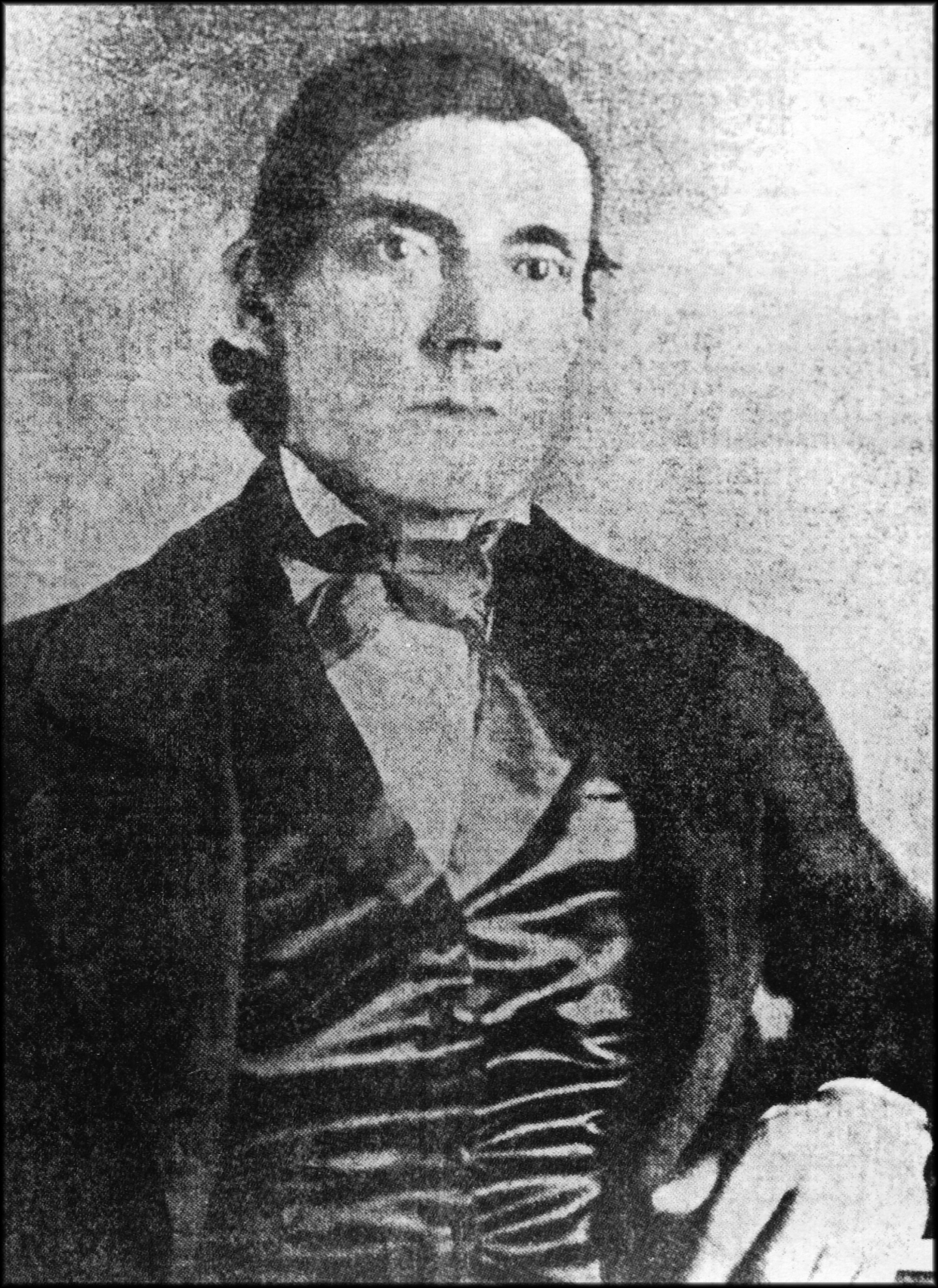The East Tennessee State University's Archives of Appalachia is a gold mine of area history. Case in point is a newspaper clipping from the Lester Moore Collection containing a reprint of an undated Johnson City Chronicle article written by John Smalling, a grandson of city founder, Henry Johnson (1809-1874).

Johnson City Founder, Henry Johnson (photo courtesy of Betty Jane Hylton)
The family member noted that he was 74 years of age. His mother, Sarah Jane Johnson was the only daughter of Henry and Mary Ann Johnson. His mother was married in 1856 to Abram G. Smalling and to this union was born eight children.
John's grandmother, before her marriage to Henry Johnson, was Mary Ann Hoss, a sister to Elkanah, Landon C. and Matt Hoss and cousin to Montgomery Hoss and the late Bishop E.E. Hoss.
In John's boyhood days, when he was from 7 to 14 years old, he spent much of his summer months at his grandfather’s home and there learned a good deal about the early settlers of the little village that became Johnson City. When Henry Johnson came to what was first called Johnson's Tank, there was no railroad present. However, it had been surveyed and the track laid to a location near Carter’s Depot (Elizabethton), which later became Watauga Station near the Watauga River.
Henry Johnson bought a parcel of land on the north side of the railroad survey and built a large house which later was used as his residence. It also housed his general merchandise store and the post office, for which he was later named postmaster. Furthermore, he kept a boarding house and rooms for lodging. The entrance to this building was from what is now Market Street.
There was another entrance on the southwest side of the building leading in from the railroad track, which led to the dining room and was used significantly more than the Market Street entrances.
“Tip” Jobe, as he became known, arrived soon after Johnson and purchased the tract of land on which a large spring was located. However, he did not build a home on it until later where he reared a large and influential family. Among his boys was Ike T. Jobe, about six years older than John Smalling. They played together on property which we now refer to as Fountain Square.
After the East Tennessee, Virginia and Georgia (ETV&G) Railroad was completed, Henry Johnson built a depot on the site naming it Johnson’s Depot. Through the influence of Major Goforth, who was then supervisor of the railroad from Bristol to Bulls Gap, Henry was appointed depot agent. In a short time it became a regular stop for all trains.
The little village began to grow over time, including some familiar family names: Hoss, Miller, Patton, Reeves, Yeager, Pouder, Carr, Toppin, Jones and Swingle. According to John, these folks were of that hardy pioneer stock that knew nothing but honesty and fair dealings.
The Henry and Mary Ann Johnson family consisted of three sons and two daughters (one died in infancy). Edmond, the eldest, married Ann Swingle; John was wed to Hattie Alexander; and Harrison, the youngest, died during the Civil War.
Other progressive merchants soon followed: John W. Hunter; King, Hoss & Hodge, succeeded by Christina; Hoss & Hodge; and Johnson and Bowman, who erected a modern building on the corner of Market street facing what is now Fountain Square. This building was later used by a Mr. Bruner, who operated the first “racket (five and ten cent variety) store” available in all the adjacent countryside.
The Hodge mentioned in the firm of King, Hoss & Hodge, who was more affectionately known to his associates as “Wis,” was still living in Johnson City when John penned his article. The first man to operate a then-modern hotel was Elkanah Hoss, who numbered among his guests many notable characters, one of them being Mrs. Fred Artz.
Smalling concluded his informative work by noting that he had Henry Johnson's diary, which also contained references about Andrew Johnson, the 17th president of the United States). A question begs to be asked; does anyone know the whereabouts of this actual diary or a copy of it? That would be a historian's dream.
